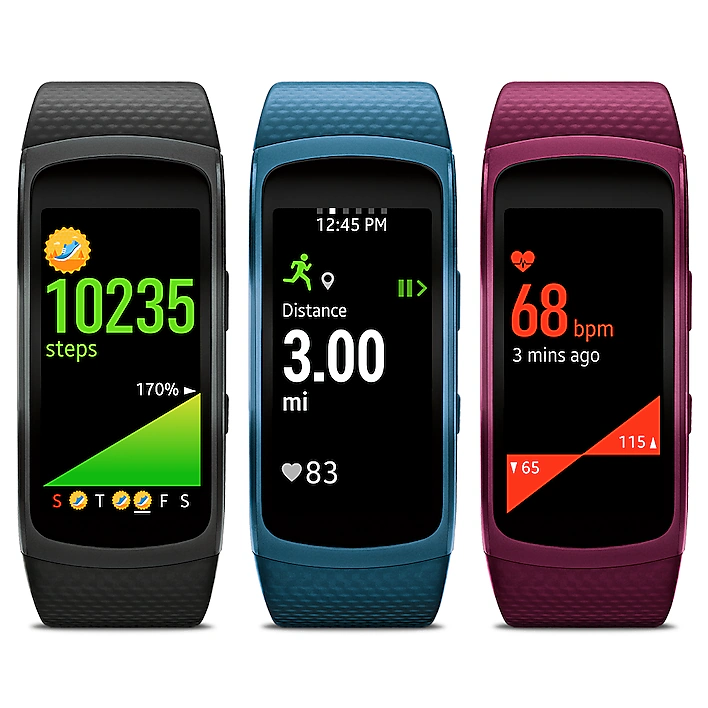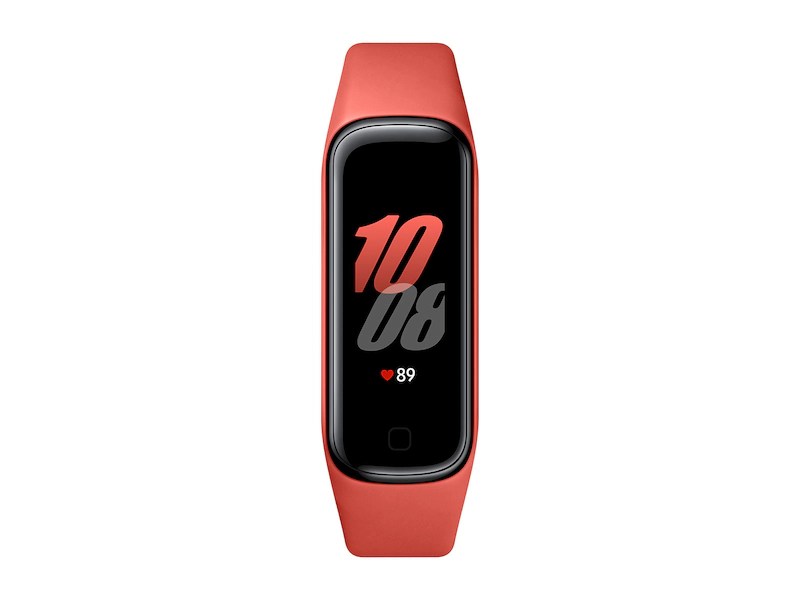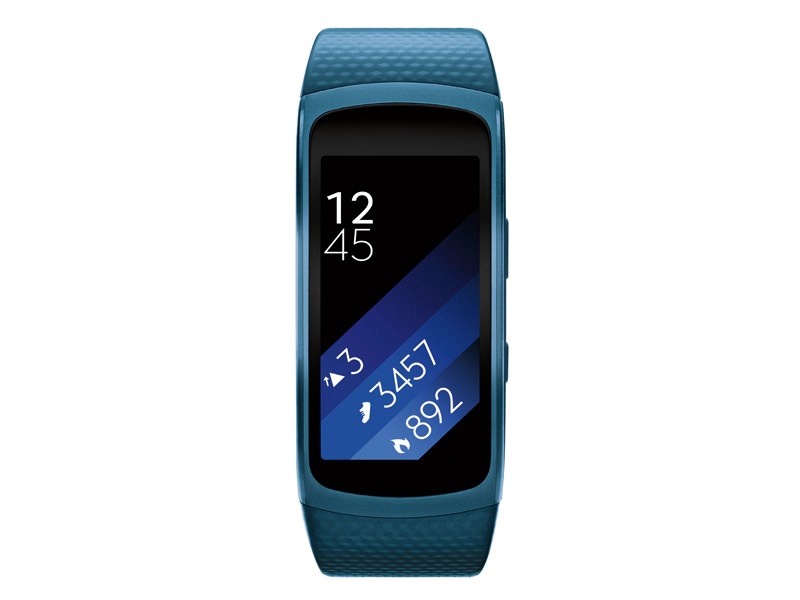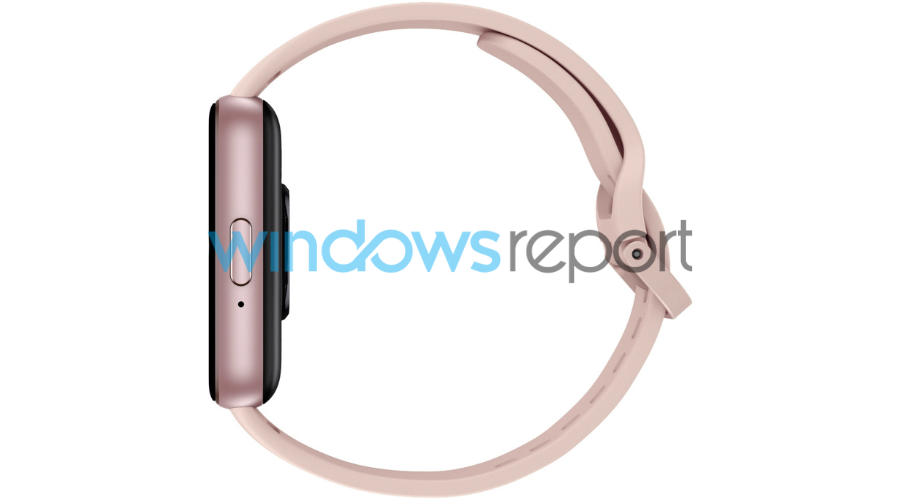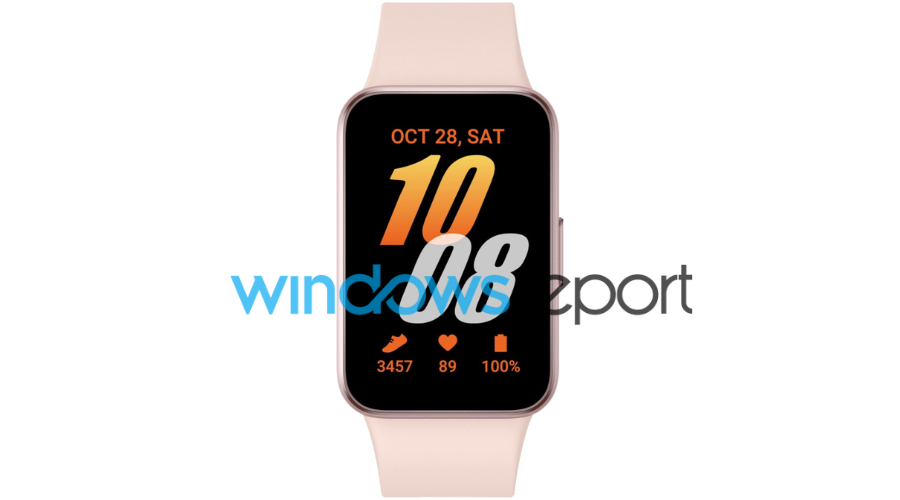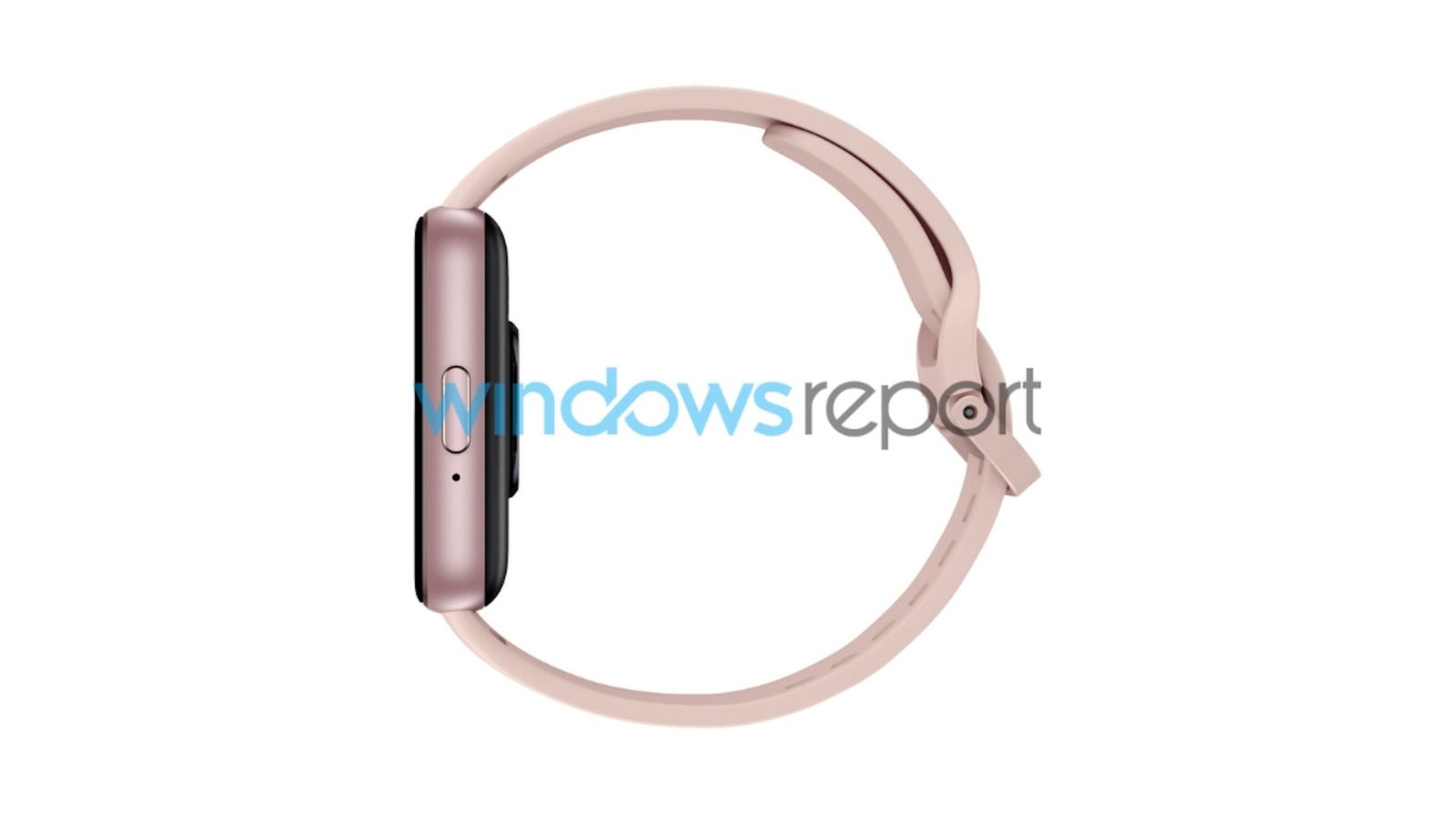
Windows Report yesterday posted exclusive images of the yet-to-be-released Samsung Galaxy Fit 3, and it looks a whole lot like a smooshed-up Apple Watch.
The last time Samsung released a fitness tracker was in September 2020, and with the images leaked from Windows Report, it’s safe to say there has been a major design renovation for the Fit 3.
Below are images of Samsung’s Fit 2 fitness tracker, with which you can make plenty of visual discernments when compared to an Apple Watch:
And now, from Windows Report, Samsung’s Fit 3 tracker leaked images:
While every photo here looks strikingly similar to the Apple Watch, the side profile of the Samsung Fit 3 tracker looks so much like an Apple Watch that it would be hard to tell the difference if you didn’t have an Apple Watch of your own (it’s so clearly missing the digital crown). Not only that, but the dusty rose color and design of both the watch and the watchband feel very Apple-adjacent, as well.
As reported by 9to5Google, the Samsung Fit 3 images:
…show off a new watchface, though we’re not sure what OS is being used on the Fit 3. It’s possible Samsung could incorporate Wear OS, though it’s more likely that the company will stick to a stripped-down fitness tracker software, like its previous rtOS.
Additional findings from the leaked images include (via 9to5Google):
The display chassis itself goes beyond the edges of the watch band, which doesn’t look very thin, leading us to believe the Samsung Fit 3 will be a substantial fitness tracker in size alone, though it won’t quite reach the same footprint as a Galaxy Watch or Fitbit Sense.
The underside shows a sensor array that will likely house a heart rate sensor and possibly a temperature sensor since we know Samsung can utilize that tech. Beyond that, it’s hard to tell what is happening inside the device other than the rear panel of the Fit 3.
On the inner part of the watch band, there are a couple of small slits running parallel to the top of Samsung’s Fit 3. It’s possible those could be buttons similar to what Samsung included with the Watch 6 to release the springs more easily. Alternatively, they could be relief for sweat and air to circulate through during activity.
We don’t yet know how much the Samsung Galaxy Fit 3 tracker might cost, but the Fit 2 came out at $59 in 2020 and currently goes for around $135 on Amazon, which is significantly cheaper than an Apple Watch SE.
The Samsung Galaxy Fit 2 offers automatic fitness tracking, up to 15 days of battery life, wellness monitoring, and the ability to receive and reply to smartphone notifications – it’s safe to say the Samsung Galaxy Fit 3 will have these features and more upon its official release.
Connect the Watts’ Take
Earlier this year, I purchased my first Apple Watch – the second-generation Apple Watch SE in Starlight – and I have barely taken it off in the months that I’ve had it. Namely, I use it for tracking my workouts, and admittedly, the gamification of Apple Fitness works wonders for me. I dutifully log my workouts, achieving “7-day workout weeks,” and proudly accomplish Apple’s holiday-themed challenges (e.g., right now, there is a Veteran’s Day challenge, pushing users to work out for 11 minutes within a 24-hour period).
For $249, my Apple Watch SE wasn’t the most expensive Apple Watch option available, but it’s still more expensive than Samsung’s Fit trackers. One of the reasons I love it is because of its design aesthetic, something the Samsung Galaxy Fit 3 tracker is clearly emulating. We’ll have to wait and see how much it costs, but so far, the Fit 3 tracker is setting itself up for success in its Apple-adjacent design.
FTC: We use income earning auto affiliate links. More.
